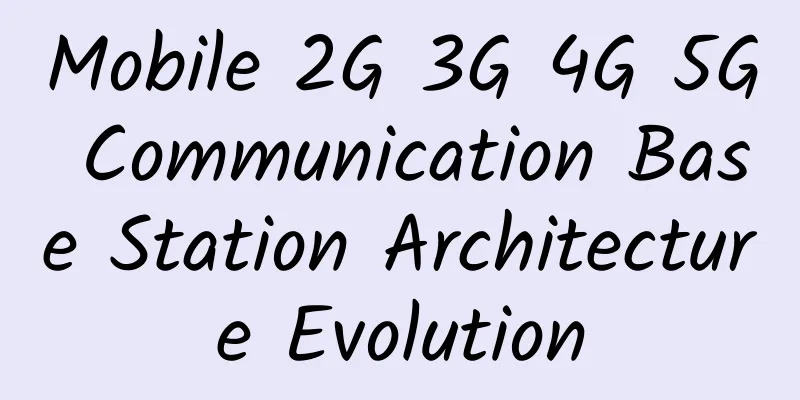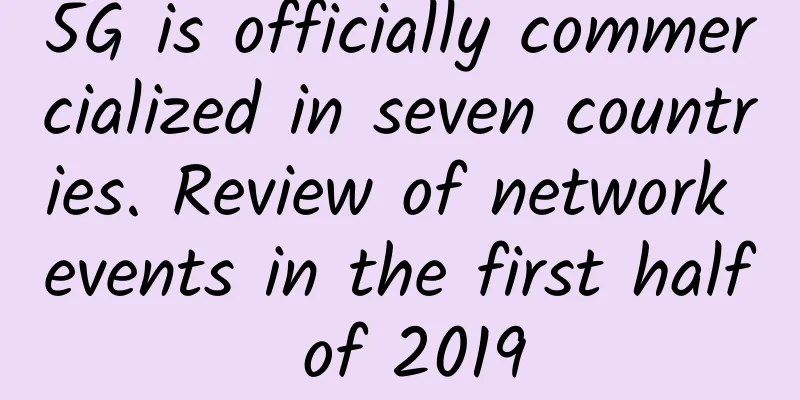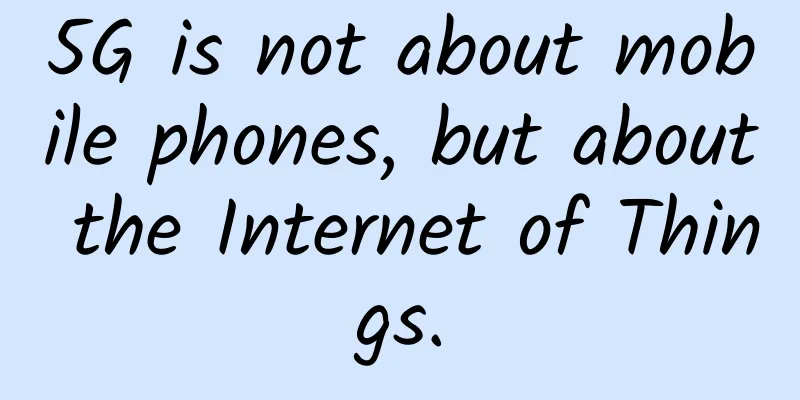From 0G to 5G: How we got here and where we are going

|
Ah…the beauty of wireless convenience. Thanks to wireless networking communications technology, the world is what you would call “connected.” However, it’s been a long road to achieve today’s speeds, security, and data services through each generation of network technology (0G, 1G, 2G, 3G, 4G, and 5G). While you may have a general idea, how well do you actually know the origins of the Net Generations and what they mean? And how will they impact future Net Generations? As 5G gathers momentum, now’s a good time to take a trip down memory lane through each Net Generation and see how each technology got to where it is today. 0G: Welcome to the worldThis is an era that most people are not aware of. We can’t blame them, though, as it hasn’t been a topic of conversation for a long time. Still, while 0G is a fundamentally original era for wireless communications, everything must have a beginning. As early as the 1950s, the rise of wireless network connectivity began in the form of mobile wireless phone systems. Pre-mobile communication devices were usually installed in cars or briefcases and supported only a limited number of channels for information transmission. The technology was based on analog signals, used as a communication transmitter between two endpoints to establish a real-time voice call. The 0G generation introduced two methods of communication. People initially used the push-to-talk (PTT) method for wireless communication. Think of this method as a walkie-talkie. Another method of communication - now known as a specification - was established after PTT. This is the Improved Mobile Phone System (IMPS). This method allows the speaker and receiver to listen and exchange information at the same time. 0G technology was not available to the vast majority of people, so when the grand promise of wireless communication became apparent, the development of 0G was further developed. 1G: A Journey Through the World's WatersAround the 1980s, private companies began creating the next generation of telecommunications: 1G. The basic functionality of 1G was similar to 0G - letting people make real-time voice calls using analog signals. But it was the approach and scale of the technology that made it so special. This generation was the beginning of global wireless networks. 1G has a speed of up to 2.4Kbps, and due to the increase in the number of base stations in different geographical areas, 1G is able to support larger-scale real-time voice calls. All base stations reuse frequencies, which means that depending on the location of the base station, certain areas have the same radio frequencies through which communication transmissions can be carried out. Although frequency reuse increases the number of users, it inevitably leads to some security issues. As mentioned above, 1G is based on analog signals, which means that the information of the messages is not encrypted in any way. Therefore, if your phone captures the same frequency as another person's communication device, all your private conversations can be easily tracked by a third party. Considering the security issues, the era of improved wireless communication is coming. 2G: The rise of SMS and MMSAbout a decade later, 2G network technology was released. The second generation of wireless communications blew everyone away with improved security and data services, most of which are still in use today. First and foremost, this was the era that made SMS and MMS possible! Emojis and texting abbreviations like "LOL" were brought to life during this time. Other features emerged with 2G, such as conference calling, call holding, and roaming. While the network was only capable of speeds up to 64Kbps, it was more than enough to accomplish its task since the data wasn’t that heavy in the first place. Nonetheless, 2G did play an important role in IIoT for data transfer between machines that didn’t rely on speed. The second most significant difference between 1G and 2G network technology has to do with the security of information in transit. Instead of transmitting data via analog signals, 2G networks use digital signals to encrypt information rather than leaving it intact. Another notable difference is the 2.5G and 2.75G networks. These are versions of the original 2G, but with improved security features and faster data transfer capabilities. 3G: Mobile Internet3G is a generation of network technology that is known for bringing people to the Internet wirelessly. Released around the 2000s, 3G was a huge improvement over previous generations because it provided many data services that were previously only available through computers. With 3G, people can surf the Internet, write emails, and share all kinds of content on small devices we call smartphones. Since people can surf the Internet through their phones, 3G connects consumers to cloud services, storing all their data wirelessly without having to plug it into other data storage hardware. 3G networks were also a step forward in terms of technology. By tweaking speed and security protocols, this generation of networks could initially reach speeds of up to 200Kbps and had greater security than previous networks. 3G was widely used in IIoT applications due to its faster speeds and global reach, allowing for the tracking and monitoring of machines. Throughout the 3G era, newer generation versions such as 3.5G, 3.75G, 3.9G, and even 3.95G were created, although unlike 2.5G and 2.75G, they all remained under the same 3G umbrella. 4G: Improved functionalityWhile 3G was changing what was possible with wireless networks, its speeds were nowhere near the pace of modern life and high-performance demands. So, around 2010, the fourth generation of networks was born. The main goal of 4G is to improve on all aspects of the capabilities and functionalities of the previous generations, such as user capacity, speed, security, and cost of data services. It is intended for both personal and industrial use. With 4G, it will be possible to continuously monitor and control all types of IIoT applications, and even stream videos in real time. But before 4G could cope, this generation of networks had a rocky start, as hardly any Internet Service Provider (ISP) could meet the set standards of 4G, especially in terms of network speed. It turns out the solution was to add more letters! For a network to be called 4G, its download speeds could not drop below 100Mbps. So, since the network was vastly improved, but couldn't be classified as 4G, the term "4G LTE" was used to identify this improved wireless network. After a while, ISPs were able to establish network connections that could meet the criteria of the 4G standard, but since the original 4G terminology was no longer new or exciting, the term "4G LTE-A" was created for marketing purposes only. 4G plans aren't being abandoned anytime soon, but we can't ignore the fact that there's a new sheriff in network town. 5G: Improving our livesAfter this long journey, we have finally arrived at the forefront of wireless network technology; let us welcome the fifth generation! 5G is planned to significantly improve our living standards through minimized latency, increased speed and higher bandwidth. 5G is expected to have a latency of less than 1 millisecond. It will support seamless data transfer with download speeds of up to 2.5 Gbps and upload speeds of up to 1.25 Gbps. 5G promises to provide ten times the service and user experience of its predecessor. 5G will completely change the way we use and perceive current wireless network technologies, both for private and daily use, as well as for IIoT. With this generation, home networks will no longer rely on wires, and the IoT and related industries will be able to advance projects such as self-driving cars and remote medical operations. We've been surfing the 5G buzz wave for a while now, but there's always more to learn about its promise. Seeing all the network generations together gives us better perspective on how far we've come as an ever-improving society. With each network generation, new possibilities emerge. What does the 5G future look like? We'd say it looks bright. Very bright. |
<<: 802.11be (Wi-Fi 7) Technology Outlook
>>: In the 5G era, how can telecom operators lead the future through IoT services?
Recommend
What are the main application scenarios of 5G?
5G networks offer greater bandwidth than previous...
DediPath: 1Gbps unlimited dedicated server with 15% off from $38/month, VPS hosting with 45% off from $1.57/month, data centers in Los Angeles/San Jose, etc.
DediPath offers promotional discounts for all its...
During the epidemic, network security is also very important. Learn about the features of IPSG in one minute
1. Basic Concepts of IPSG IPSG is the abbreviatio...
DediPath New Year's Day Promotion: 50% off all VPS/Hybrid Servers, Los Angeles 1Gbps unlimited traffic dedicated server starting at $39/month
DediPath's New Year's Day promotion is th...
IoT Observation: Seven benefits of LoRaWAN technology application in one article
IoT connection environment In addition to smart h...
11 reasons why YouTube supports 100 million video views per day with just 9 engineers
Author | NK Planning | Yan Zheng February 2005, C...
Finding strength in numbers: Data center agglomeration effect
In the past, data centers were often built in rem...
F5 Releases Next-Generation NGINX Controller 3.0 to Accelerate Modern Application Delivery
Recently, F5 Networks (NASDAQ: FFIV) launched NGI...
BICS: 5G device connectivity unlocks new IoT use cases
BICS, a global voice operator and mobile data ser...
LiCloud: $16.99/year KVM-756MB/10GB/399GB/Hong Kong Data Center
In April, I shared information about LiCloud.io. ...
5G and the edge: Convergence is accelerating
[[422919]] When evaluating the technologies that ...
What is SD-Branch? Why do you need it?
[51CTO.com Quick Translation] The deployed SD-WAN...
In the tug-of-war between NetOps and SecOps, what role does SD-WAN play?
Connectivity across campus, branch, cloud, and ed...
CloudCone 5th Anniversary: $14/year KVM-dual core, 1G memory, 41G hard disk, 5TB/1Gbps, Los Angeles data center
CloudCone has been established for 5 years. The c...









